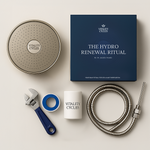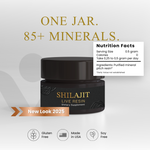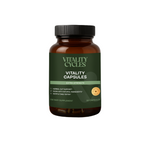Your Best Safety Plan
Your Best Safety Plan
Introduction and Topic Overview (0:00 - 1:04) Hi, my name is Dr. Daniels, and you're listening to Healing with Dr. Daniels. This is the Sunday, December 22nd, 2019 edition, and it is the year-end. I'm wishing all of you a happy holiday as well. Today's topic is "Should You Have a Prevention Plan Against the Biggest Threat to Your Safety?" I think so.
The Medical-Industrial Complex and Its Risks (1:04 - 2:09) So what's the big threat? What's the elephant in the room? Well, today's topic is the medical-industrial complex and how they have admitted to being the cause of 250,000 deaths per year in the United States. I'm going to discuss this very real hazard and self-defense actions you can take to protect yourself from assault and even death at the hands of the medical-industrial complex.
Doctor-Patient Relationship and Courtesy (2:09 - 2:50) This was inspired by an article in Medscape where doctors were complaining that their patients were being rude and even abusive to them. I said to myself, wait a minute, you have a doctor who is an instrument of torture and killing. This is not homicide; it's killing. Well, how should a person treat their executioner or their assailant or someone who has the intent of assaulting and killing them? I decided that maybe the courtesy the doctors were requesting, perhaps they weren't deserving of.
Self-Defense Against Medical Violence (2:50 - 4:11) We're going to take a look at what the real risk is, how to identify it, and how to protect yourself against it. This is really important. There's a whole body of knowledge about this, and as always, the internet is a treasure trove of information. People spend a tremendous amount of money on electronic surveillance systems, security systems, alarm systems, and dogs to protect them from strangers and guard the house. Then they'll walk into their bathroom and take a pharmaceutical substance. We need to take a look at where the real danger is and how to protect against it.
Turpentine and Shilajit (4:11 - 6:33) But first, let's take a trip down. We've got our sugar. I like it mounded up a moderate amount, at least double or even three times the size of a teaspoon. And then I have my turpentine here. I use two and a half cc's, which is the same as half a teaspoon, and that's the dose I like to take several times a week. If I could fit it into my schedule, honestly, I would take it every day. The next thing is to take our Shilajit. This is some goo. You only need 200 milligrams, and you take that about four times a week. It replenishes your trace minerals. Most people don't get these 80 trace minerals from their food.
Understanding the Medical-Industrial Complex's Impact (6:33 - 8:59) The medical-industrial complex says it has killed 250,000 people every year, and like any common criminal, they always admit to a lesser offense than what they're actually doing. Outside estimates put the number of killings as high as a million. My personal count has been over a million, and I had to stop counting because it was too depressing. The government does not consider this murder because it's sanctioned by government agencies through licenses, certifications, and standards of care. This process is completely government-approved.
Statistics on Killings and Acts of Violence (8:59 - 11:24) I looked up how many people in the United States are killed every year, and the government number is 15,000. This clearly does not include the 250,000 killings in the medical-industrial complex. The ratio of death per population is 15,000 per 327 million. If you do the math, it turns out to be 7,161 acts of violence for every death. If we multiply that by 250,000, we get 1.79 billion acts of medical violence every year. That’s 5.4 acts of medical violence per year for every U.S. citizen.
Defining Acts of Violence (11:24 - 14:10) An act of violence can include homicide, assault, robbery, and negligence. In the medical context, this can be as simple as a blood draw, an injection, or a pelvic exam. Each of these acts can be considered violent, especially when done under false pretenses. Doctors and nurses perform acts of violence when they deceive patients about the necessity or benefits of certain medical procedures. This is why it's easy to see how there can be 5.4 acts of violence per U.S. citizen annually.
Self-Defense Strategies (14:10 - 16:42) So what can you do to protect yourself? The first step is avoidance—avoid dangerous places and people. In this context, dangerous places include hospitals, ambulances, emergency rooms, and doctors' offices. If you can't avoid these places, make yourself a bad target. This means being aware of your surroundings, paying attention to warning signs, and noticing pre-attack indications. In the healthcare setting, this might mean avoiding places like intensive care units and emergency rooms, where the risk of violence is highest.
Making Yourself a Bad Target (16:42 - 20:14) If you can't avoid a predator, make yourself a bad target. This means not having insurance, or having very bad insurance, and dressing in a way that does not attract attention. Wearing expensive clothes or jewelry can make you a target. Physically fit individuals are often recommended less invasive procedures, as they are perceived as higher-risk targets. The same principle applies to how you present yourself in a healthcare setting.
Visible Weapons and Doctor Interactions (20:14 - 22:07) Carrying a visible weapon can significantly increase the risk to a potential attacker, even in a doctor's office. When a doctor sees a visible weapon, they are more likely to disengage and not recommend dangerous procedures. My husband, a retired assassin and gun safety instructor, often said that just pulling a gun was enough to deescalate a situation. Similarly, carrying a visible weapon in a doctor's office can make the doctor think twice before recommending harmful interventions.
Awareness and Prevention (22:07 - 24:46) Being aware of your surroundings is crucial, not just for self-defense, but for preventing medical violence. Pay attention to what's normal and what's not in your doctor's office. Predators, including doctors, often use social conventions to their advantage, knowing that people don't want to be rude. If something feels off, trust your instincts. Warning signs include forced teaming, where the doctor uses the word "we" to create a false sense of partnership, and unsolicited promises, which are almost always a sign of trouble.
Warning Signs and Pre-Attack Indicators (24:46 - 28:02) There are several common pre-attack indicators you should be aware of, such as the witness check, where the doctor ensures there are no witnesses to their actions, and the victim check, where they assess if you are a compliant, easy target. In medicine, these checks manifest as unnecessary steps in treatment plans or excessive referrals to specialists. Highly skilled predators may operate in groups, using coordinated efforts to carry out their plans.
Self-Defense Tactics (28:02 - 31:01) The best self-defense is to avoid the situation altogether. If you do find yourself in a potentially dangerous situation with a doctor, dominate the conversation by asking questions and not feeling obligated to answer theirs. Comply only when absolutely necessary, and always have a plan to escape. If you're in a situation where you must comply temporarily, make sure to get away as soon as possible. Incapacitate the doctor’s motivation by making it clear they won't get paid if they harm you.
Avoidance and Health Maintenance (31:01 - 33:55) Avoidance is key to staying safe. For me, this means living in a place where I can't get to a hospital easily and not having health insurance. Increase your water intake, as dehydration is a major cause of hospitalizations. If you don't feel well, drink a glass of water. The temperature of the water should match what feels best for you at the moment.
Sponsor Information and Final Thoughts (33:55 - 35:01) I'd like to also tell people to visit our sponsor Vitality Capsules at www.vitalitycapsules.com. We have a report on the wonders of turpentine, the Candida Cleaner Report, which can help you keep your distance from those who, by their own admission, kill 250,000 Americans a year. I also have a monthly membership program where I teach you how to heal yourself and answer your questions. You can learn more at www.vitalitycapsules.com/healathome.
Questions and Answers (35:01 - 59:57) Now we have some time for questions, which I always enjoy. One listener's nephew has been diagnosed with glaucoma. He's a vegetarian and uses some medication for acid reflux and possibly blood pressure. The problem is his drugs. He needs to stop the acid reflux medication and switch to natural remedies like fennel seeds. His glaucoma can be managed by avoiding processed vegetarian foods and sticking to fresh produce. Another listener asked about the impact of undermethylation and overmethylation on their health. The answer is that it’s not something to worry about; 64% of Americans have milk fur and are perfectly healthy.
Conclusion and Final Thoughts (59:57 - 59:57) That wraps up today's episode. As always, think happens. Happy holidays, and we'll see you next week.


